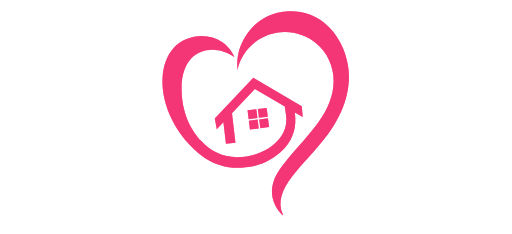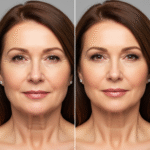Rhinoplasty is a sophisticated surgical procedure designed to reshape, resize, or repair the nose. As one of the most common plastic surgery procedures performed worldwide, it can have a profound impact not only on a person’s appearance but also on their self-confidence and, in some cases, their ability to breathe freely. Whether you are considering a “nose job” for cosmetic enhancement or to correct a functional issue, understanding the full scope of the procedure is the first and most crucial step. This comprehensive guide will walk you through what to expect, from the initial consultation to the final results, helping you make an informed and confident decision about your health and well-being.

What Exactly is Rhinoplasty Surgery?
At its core, rhinoplasty is surgery that changes the shape of the nose. The motivation for this surgery can be to change the nose’s appearance, improve breathing, or both. The upper portion of the structure of the nose is bone, and the lower portion is cartilage. Rhinoplasty can change bone, cartilage, skin, or all three. When planning a rhinoplasty, your surgeon will consider your other facial features, the skin on your nose, and what you would like to change. This collaborative process is key to achieving a natural, harmonious result that complements your unique facial anatomy.
What are the different types of rhinoplasty?
Surgeons use a few primary techniques to perform a rhinoplasty, and the best method for you will depend on your specific goals and anatomy. Understanding these options is an important part of your initial consultation.
Open Rhinoplasty: In this procedure, the surgeon makes a small incision across the columella, the strip of tissue separating the nostrils. This allows the skin to be lifted, providing the surgeon with complete visibility and direct access to the underlying nasal structure. This technique is often preferred for more complex cases or revision surgeries.
Closed Rhinoplasty: For this technique, all incisions are made inside the nostrils. This means there are no visible external scars. While it offers more limited access for the surgeon, it can be an excellent option for patients who require less extensive modifications to their nasal structure.
Revision Rhinoplasty: Also known as secondary or tertiary rhinoplasty, this surgery is performed to correct or refine the results of a previous nose surgery. These procedures are often more complex due to the presence of scar tissue and altered anatomy.
Functional Rhinoplasty: Procedures like septoplasty are performed primarily to improve nasal function. A septoplasty straightens a deviated septum—the wall of bone and cartilage that divides your two nostrils—to resolve breathing difficulties.
Who is a good candidate for a nose job?
A successful rhinoplasty outcome begins with selecting the right candidates. A good candidate for rhinoplasty surgery typically meets the following criteria:
Their facial growth is complete (generally mid to late teens).
They are in good physical health and are a non-smoker, as smoking can impair healing.
They have specific, realistic goals for the improvement of their nose’s appearance or function.
They are psychologically stable and are undergoing the procedure for themselves, not to meet someone else’s expectations.
What Can You Expect During Rhinoplasty Recovery?
Patience is key when it comes to rhinoplasty recovery. While the initial healing phase is relatively short, it can take up to a year or more for the final, refined result to become fully visible. Your surgeon will provide detailed post-operative instructions to ensure your healing process is as smooth and comfortable as possible.
What is the initial recovery period like?
The first week after your rhinoplasty surgery is the most significant phase of recovery. You can expect to wear a nasal splint and possibly internal splints to support and protect the new structures. Swelling and bruising, particularly around the eyes, are normal and will peak within the first few days. Most patients report feeling discomfort and stuffiness rather than severe pain, which can be managed with prescribed medication. It is essential to rest with your head elevated and avoid strenuous activity during this time.
How long until you see the final results?
After your surgeon removes the splint (usually about one week post-op), you will get the first glimpse of your new nose. However, significant swelling will still be present. About 80-90% of the swelling subsides within the first two to three months. The remaining subtle swelling, especially at the nasal tip, will gradually resolve over the following year. It is this final stage of healing that reveals the ultimate definition and refinement of your rhinoplasty.
How Do You Choose the Best Rhinoplasty Surgeon?
Choosing your surgeon is the most important decision you will make in your rhinoplasty journey. The skill and experience of your surgeon directly influence both your safety and your aesthetic outcome. Take your time to research and select a professional you can trust.
What qualifications should your surgeon have?
Look for a surgeon who is board-certified, ideally by the American Board of Plastic Surgery or the American Board of Otolaryngology. Board certification demonstrates that a surgeon has undergone rigorous training and testing in their specialty. Furthermore, seek out a surgeon who specializes in or has extensive experience with rhinoplasty, as it is widely considered one of the most challenging of all plastic surgery procedures. You can verify a surgeon’s credentials through reputable sources like the American Society of Plastic Surgeons.
What should you look for during the consultation?
Your consultation is an opportunity to interview your potential surgeon. Come prepared with questions and pay attention to the following:
Before-and-After Photos: Ask to see a portfolio of their work, focusing on patients with similar nasal concerns to your own.
Communication: Does the surgeon listen carefully to your goals? Do they clearly explain their proposed surgical plan?
Technology: Many top surgeons use computer imaging to help you visualize potential results, which helps ensure you and your surgeon are aligned on the aesthetic goals.
Transparency: Your surgeon should provide a clear breakdown of the costs and be upfront about the potential risks and complications associated with the surgery.




Pingback: My Rhinoplasty Journey in Antalya: A Diary